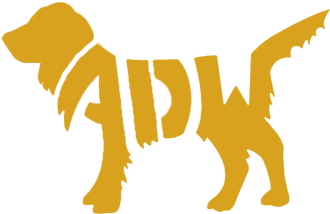Training Your Dog to Track:
When you train a dog to track, you are teaching them to follow the unique ground scent left by a target, which could be a human or animal.
This type of training contrasts with man trailing, where the dog relies more on air scenting, or detection work, where a dog searches an area or person for a target scent. Tracking hones a dog's ability to follow the disturbance left by footsteps, rather than airborne scent.
At Anglian Dog Works, our tracking programme teaches dogs that the fastest way to a find is by following footsteps. As the dogs progress in their tracking careers, these skills can be applied to real-world scenarios. For example, they might be used in criminal investigations—"the suspect left through this door with the stolen goods"—or in search and rescue, where a hiker was last seen at a specific point.
Tracking in Dog Sports: The Example of IGP
Tracking is also included in dog sports, such as IGP (Internationale Gebrauchshunde Prüfungsordnung), formerly known as IPO. This German-based sport tests a dog’s abilities in three key areas: tracking, obedience, and protection.
In IGP, tracking is one of the three phases and assesses a dog’s scenting ability, stamina, and focus.
For example, in IGP 1 (Level 1 tracking), the dog follows a track that is at least 300 paces long, has two right-angle turns, includes two articles and has been aged for 20 minutes.
The dog's pace should be an appropriate speed to score top marks —not too fast, which could indicate poor tracking, nor too slow, which could indicate hesitation or lack of confidence.
(So don't worry you are going to get dragged down the field!)
Understanding "Articles" and Indications
In tracking, a novel item placed along the track is called an article. The dog is trained to signal, or “indicate,” when they've found something novel on the trail. At Anglian Dog Works, we teach a focused down as the indication behaviour because it can be applied safely across any discipline without risking the contamination of evidence.
Of course, every dog is different, other behaviours such as a happy tail, retrieve, scratch, bark or hand touch can also be seen in the tracking showing their unique personalities while on task.
Ready to Start Your Dog's Tracking Journey?
The smell is an important sense to dogs. The part of a dogs’ brain that is responsible for processing scents detected by their noses is approximately 40 times larger in dogs than in humans, relative to total brain size.
Therefore engaging this part of the dogs’ brain in scent work training is both mentally and physically stimulating!
Whether you want to teach your pet a new skill to keep them happy, thinking and busy or hope to utilise the training in real-world scenarios or competitive sports like IGP, we can help guide you every step of the way.
Want to start your dog’s tracking journey? Enrol in our online course today!
Sign up for the Online Tracking Course

